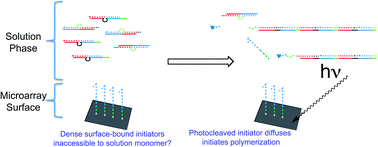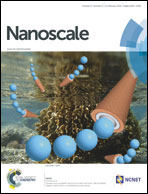Photocleavage control of nucleated DNA nanosystems – the influence of surface strand sterics†
Abstract
We use sterically inaccessible ‘seed’ strands, released from a surface into solution by photocleavage to initiate a nucleated DNA polymerization reaction. We demonstrate control of the quantity of ‘seed’ release and that hairpin steric protection of the ‘seed’ leads to less ‘leaky’ surfaces. This polymerization is a model system for surface-photocleavage initiation of sub-stoichiometric reaction cascades; these cascades should find use as a component of labs-on-chips capable of bioanalytical and DNA-computing tasks.


 Please wait while we load your content...
Please wait while we load your content...